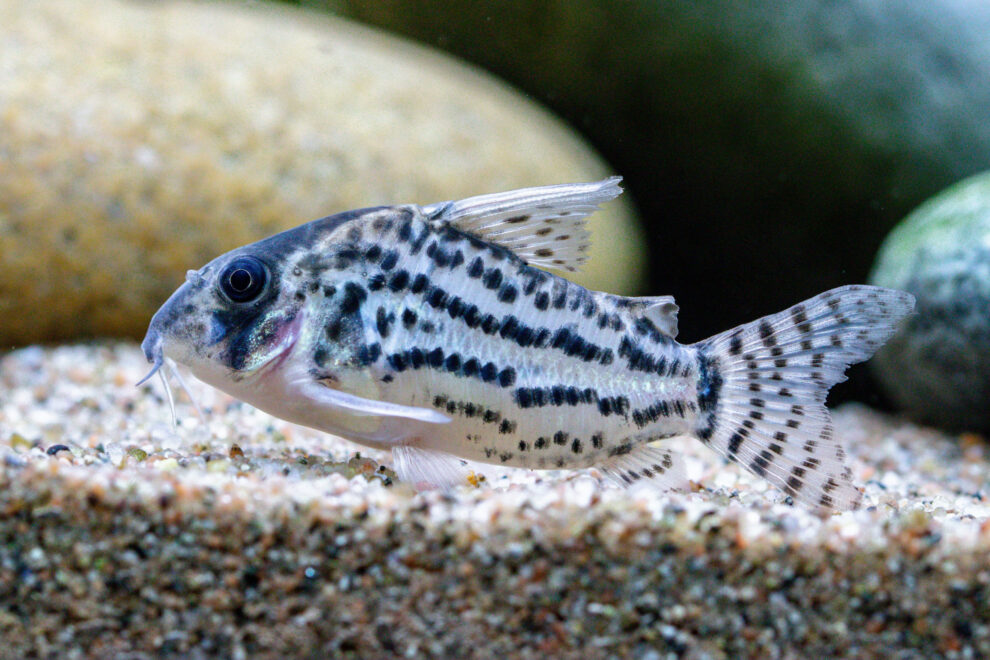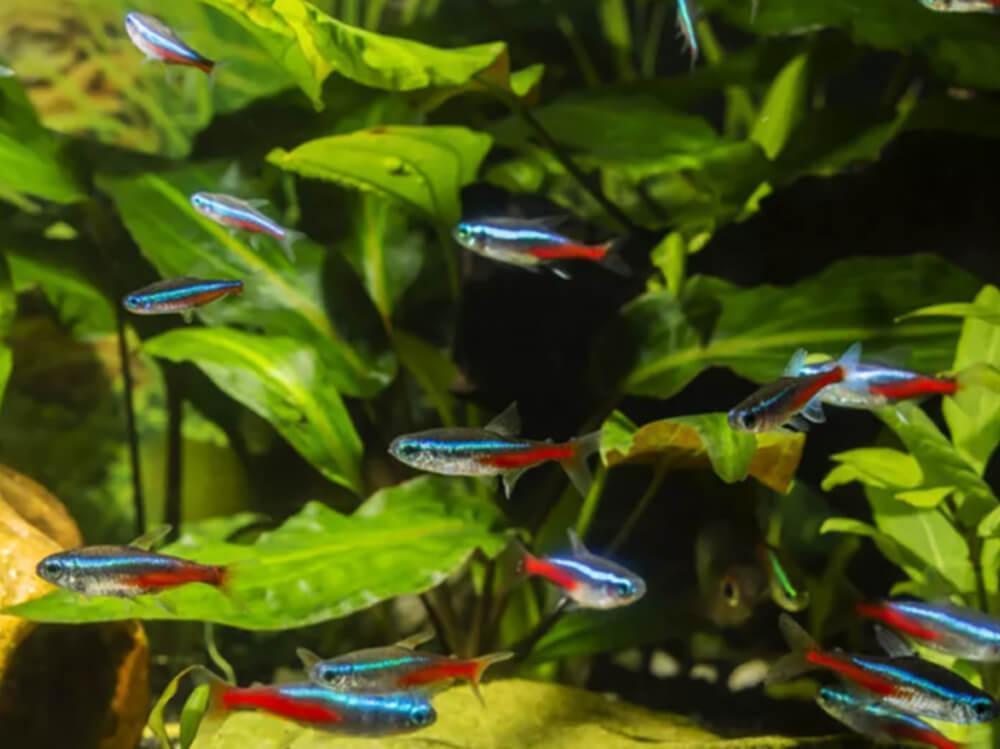How to take care of Neon tetras
Neon tetras are small tropical freshwater fish with a bright red stripe and light blue electric colouration.
They can be seen in virtually every tropical fish shop around the world and sell in their millions every year. Native to Peru, Colombia and Brazil these tiny colorful fish reach a maximum size of just 3cm in length, making them suitable for smaller tropical aquariums.
Neon tetras belong to the family Characidae, which includes Piranha and huge, walnut-eating Pacu, but in general, tetras are small, peaceful schooling fish inhabiting rivers and streams in South America and Africa. Neon tetras inhabit small forest streams where their bright colours enable them to locate each other in the gloom as well as dazzling and confusing any would-be predators. They live in number in the wild and need to be kept in shoals of ten or more in the aquarium.
Neon tetra fish tank set up
Neons can be kept in aquariums upwards of 40cm in length, and need a heater for warmth and a filter to break down their waste. Lighting can be subdued and their colours may even intensify in low light. Neon tetras don’t actually glow in the dark, but that iridescent blue colouration has highly reflective scales, further contrasting the deep red on the tail.
For a natural look fit a black background and decorate the tank with sand, leaves and wood. Plastic or live plants can be used but are not essential. Live plants do aid water quality however and can provide shade for Neons as well as providing somewhere to take cover and breed. Neon tetras are egg scatterers, coming together to spawn but taking no extra care for their tiny eggs and fry. In nature eggs fall between roots and leaves and are sensitive to light, requiring dark for proper development.
Breeding Neon tetras
Although bred commercially, Neon tetras are not commonly bred in the home aquarium due to the fact that the eggs are so small, they get eaten by other fish, and are sensitive to light. A separate breeding tank could be set up especially for breeding, however. Females are slightly larger than males and their bellies swell with eggs.
A pH of 6-7 and a temperature of 24C is ideal. Neon tetras can tolerate slightly cooler water than their cousins the Cardinal tetras, and the two species can be told apart by the solid red colouration on Cardinal tetras and the Cardinal’s slightly larger size. Cardinals prefer even warmer water at 28C, and a pH as low as 4, although a pH of around 6 is easier to maintain long term and more stable. Both belong to the Genus Paracheirodon, with Neons being Paracheirodon innesi and Cardinals Paracheirodon axelrodi.
There is a third neon tetra fish species called the Green neon tetra, Paracheirodon simulans, which looks like a small combination of the two. Green neons need soft water and groups too and can be kept in much the same way. Then there are the line bred variants of the captive-bred Neon tetra including longfin, albino or golden, and Diamond. Black neon tetras are a different species, Hyphessobrycon herbertaxelrodi, but can be kept in the same way as Neon tetras, and are often kept alongside them in the same tank.

Tank mates for Neon tetras
Neon tetras are timid aquarium fish that need similarly sized, peaceful tank mates. Corydoras are bottom-dwelling catfish that make perfect partners for tetras. Pencilfish, hatchetfish and dwarf cichlids like Apistogramma are suitable too and together make a South American themed biotope aquarium. Larger fish like Angelfish and Pictus catfish are known Neon tetra eaters, as are most fish of four inches or larger, which when the tiny Neons are added to the tank, just think they are live food.
Neons are sensitive to poor water quality and are not suitable for tanks of less than six weeks old, or any levels of ammonia and nitrite above zero. Poor water quality, the stress of fish trying to eat them and temperature shock can all result in Whitespot disease, so all the more reason to ensure that the tank is ready, and the fish are quarantined after purchase. They even have their own disease named after them - Neon tetra disease.
Neons are easy to feed, accepting crumbled tropical fish flakes, micro granules and live or frozen Bloodworm, Brineshrimp, Daphnia and Black mosquito larvae. Feed little and often. Three feeds per day are not excessive and help these tiny fish with fast metabolisms maintain weight and growth.









